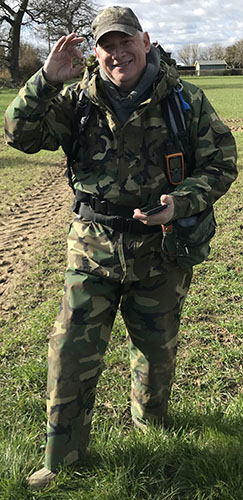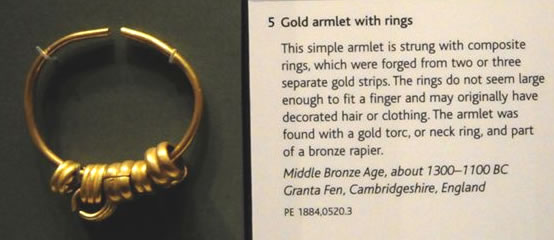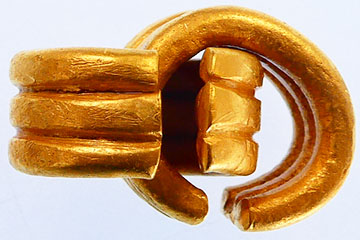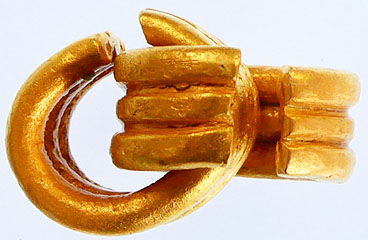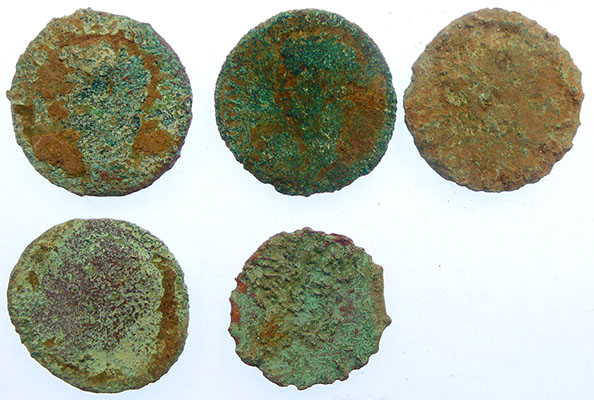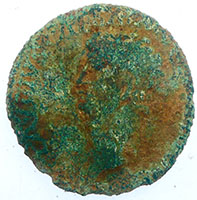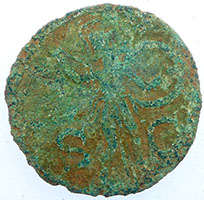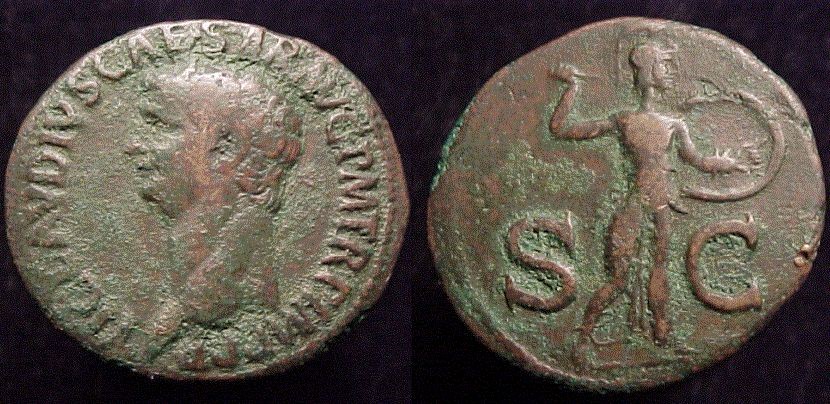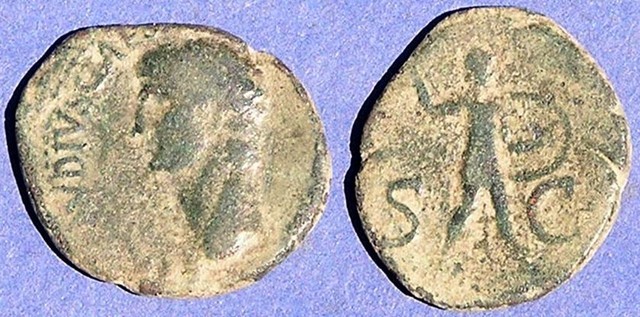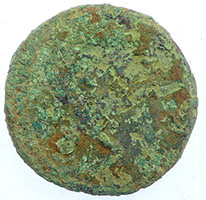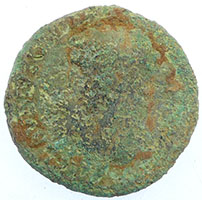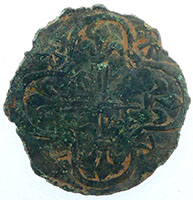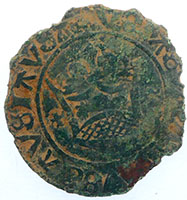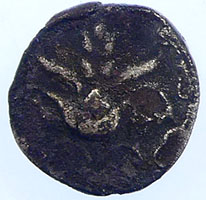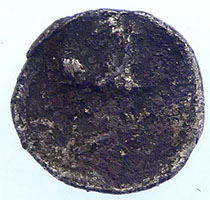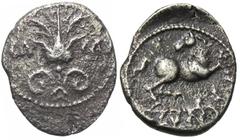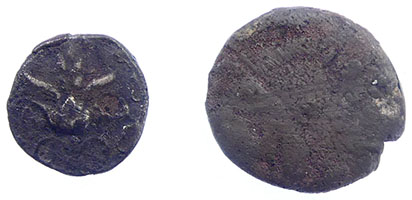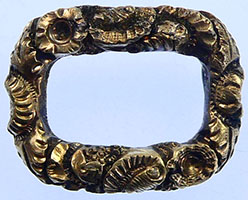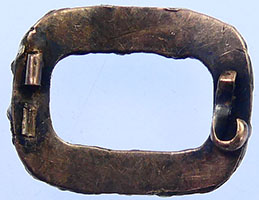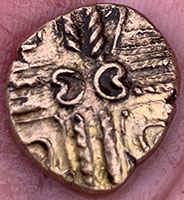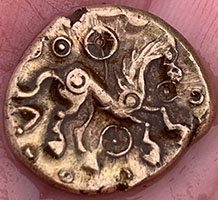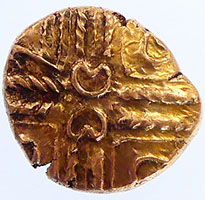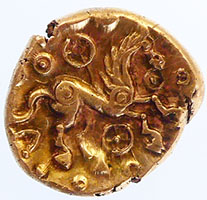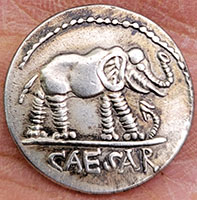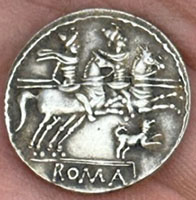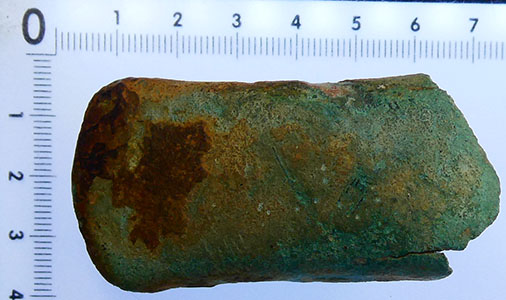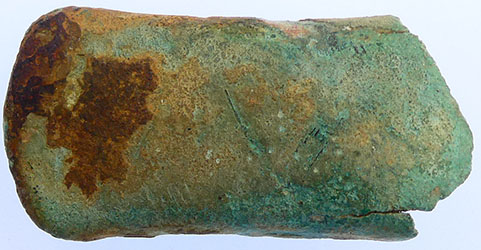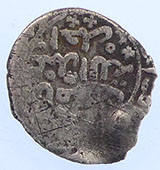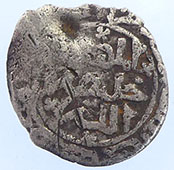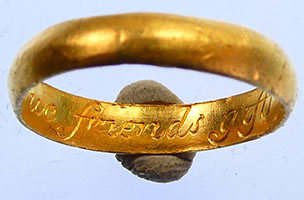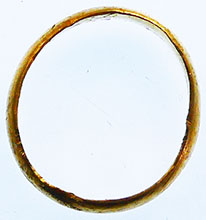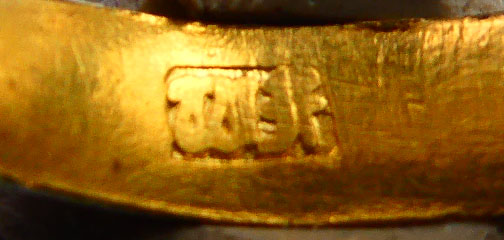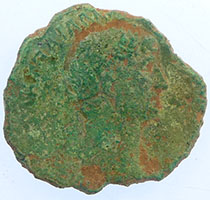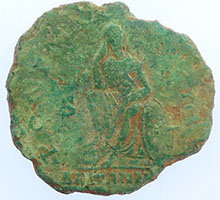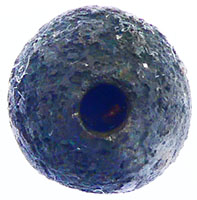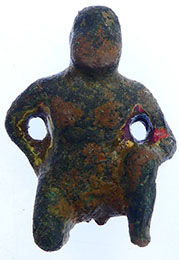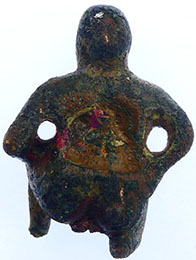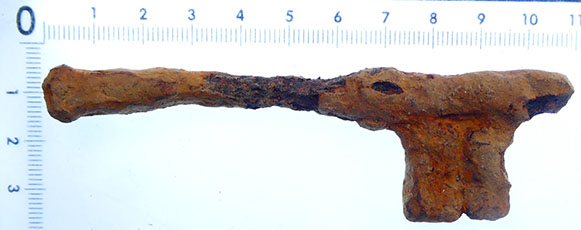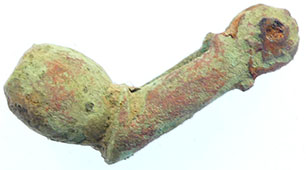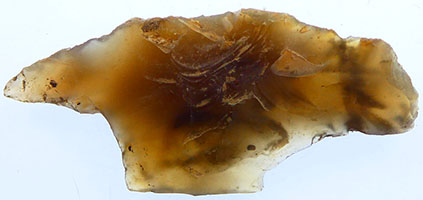

Metal detecting holidays in England with the World's most successful metal detecting club.20 years plus.
Twinned with Midwest Historical Research Society USA.
2023 Feb finds page |
|||
Wash Tom wins the freebie club sweatshirt and mug and the Spinks English Coin book for the 1st great find of the new year
Complete unit at the British museum
Stunning pair of solid gold 1300 BC armlet rings - reported to museum as treasure 16.42g - 16mm dia |
|||
Roman grots off new field in your "grots" photo, the first two also appear to be Claudius asses. I can't make out enough on the 3rd or 4th to venture any guesses, but the seemingly serrated 5th piece is interesting. I don't know of any Roman AE's of the period of Roman Britain which were created as serrati. (there were a number of Roman "serrati", but all were early B.C. AR Republican denarii - with similar edges)
A Seleukid serratus
Very interesting big Roman bronze sent off for ID 7.38g, 26.13mm The big one is a Claudius as - anepigraphic reverse with Minerva holding shield and brandishing spear: Top picture is a smallish, underweight (but surprisingly common) British copy of the type - lower photo is an "official" Rome mint specimen
This is the British copy
Mark
Another interesting big Roman bronze sent off for ID This one is more of a challenge, from the weight and diameter, it seems like a fairly early as - I can't really make out anything on the reverse (a bent leg?, that's about it) but the obverse looks like a female bust right with hair in bun at nape. Faustina Jr. immediately comes to mind, but could be Lucilla or Crispina - or perhaps someone more obscure. The few letters of legend on the obverse are tantalizing, but I can't make any sense out of the apparent legend fragment. |
|||
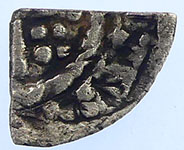 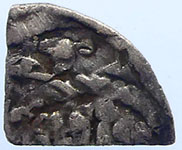 |
 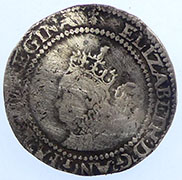 |
||
| 1216 Henry III hammered silver shortcross farthing | 1572 Elizabeth 1st hammered silver sixpence | ||
 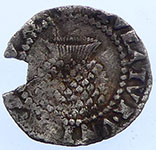 |
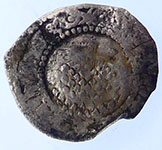 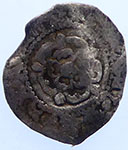 |
||
| 1603 James 1st hammered silver penny | 1619-20 James 1st hammered silver penny -Spur rowel | ||
  |
 |
 |
|
| 1816 George III milled silver sixpence | Georgian Royal Engineers button | 18th Royal Artillery button | |
|
|||
1340 AD French Jetton Crown introduced in 1340 by Philip VI (1328-50) Royal Crown with 3 rosettes across body of crown Rev Double banded straight cross fleuretty AV |
|||
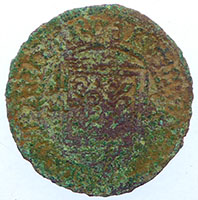 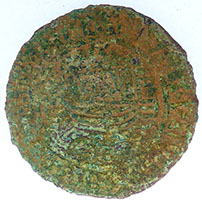 |
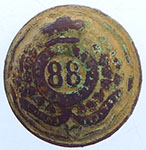 |
||
1553 Hans Schultes I 'Ship penny' jetton Obv Sailing ship facing left Rev Traditional 'four fleurs in a lozenge' crown HANS rosette SCHVLTES cross PO |
88th Regiment of Foot
88th (Connaught Rangers) Regiment of Foot |
||
 |
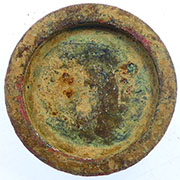 |
 |
|
| Georgian trade weight - Crown GR cipher | Victorian trade weight | Unknown trade weight -LYSTA ? | |
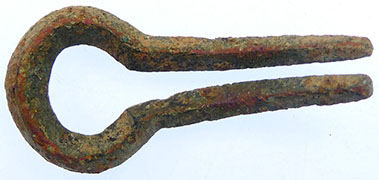 |
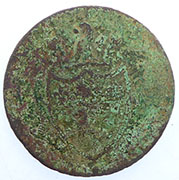 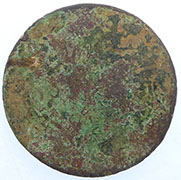 |
||
| Georgian Jews harp | 1793 Suffolk Sudbury Halfpenny Condor OBVERSE: Shield of Arms of Sudbury; dog, lion. MAY THE TRADE OF SUDBURY FLOURISH. REVERSE: PRO BONO PUBLICO 1793. EDGE: PAYABLE AT GOLDSMITH & SONS SUDBURY .XXX. |
||
  |
|||
c BC Celtic clothing toggle 37.7mm L x 8.62mm W x 9.39mm dia head 15.17g |
|||
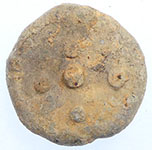 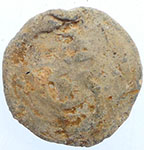 |
 |
 |
|
| Early medieval lead token | Georgian button | c1794-1814 North York Militia Crowned Yorkshire Rose with 'North' and 'York' either side In 1763 various local battalions were amalgamated to form the North Riding Militia through various name changes they eventually form the 4th Battalion of the Yorkshire Regt. |
|
 |
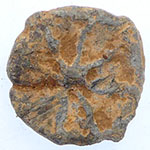 |
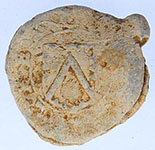 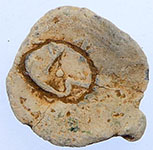 |
|
| Georgian buckle | 15thC lead token | Post medieval lead bale seal | |
 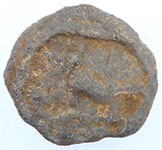 |
 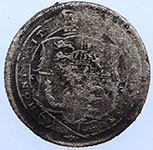 |
||
| Early medieval lead token | 1816 George III milled silver sixpence | ||
 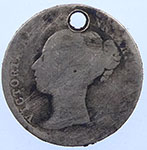 |
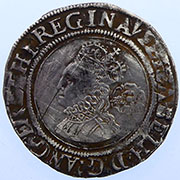  |
||
| 19thC Victoria milled silver three pence | 1562 Elizabeth 1st hammered silver sixpence - Pheon mint mark | ||
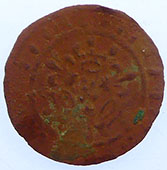 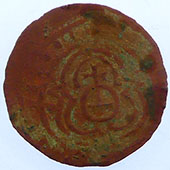 |
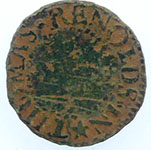 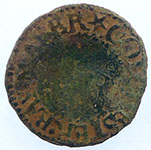 |
||
'Normal orb' German jetton with crown initial mark Hans Krauwinckel (1562-1586) |
17thC Thomas Renolds, bays maker of Colchester hammered copper trade farthing |
||
 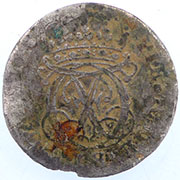 |
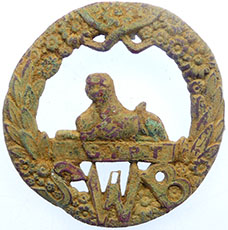 |
||
Schleswig-Holstein-Gottorp, 6 Schilling, 1723, reverse VI SCHILLING FÜRST SCHLE. HOL. MUNTZ / PIE IUSTE ET HONESTE Karl Friedrich of Schleswig-Holstein-Gottorp was the father of the later Russian Emperor Peter III. (overthrown and murdered by his wife Catherine II the Great). This founded the line Romanov-Holstein-Gottorp from which all later Tsars emerged. |
WW1 badge The South Wales Borderers was a line infantry regiment of the British Army in existence for 280 years. It came into existence in England in 1689, as Sir Edward Dering's Regiment of Foot |
||
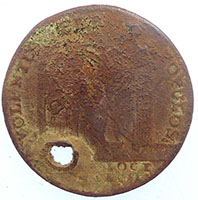 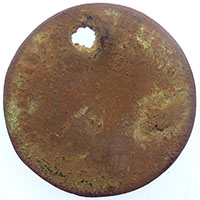 |
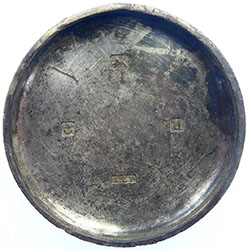 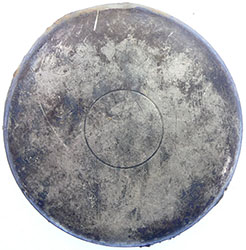 |
||
George 1st 1727 Coronation medallion Coronation of George II 1727 J. Croker, the official coronation issue, Obverse: Bust left Laureate, armoured and draped, GEORGIVS. II. D.G. MAG. BR. FR. ET. HIB. REX. Reverse the King enthroned right, is crowned by Britannia VOLENTES. PER. POPULOS Exergue: CORON. XI. OCTOB. MDCCXXVII, |
1919 Silver Fob watch back - Birmingham hall mark, date letter U Dennison, Wigley & Co (from 1879) makers mark ALD - Hansworth Birmingham Sovereign case, tea service, watch case |
||
Gold earing marked 9 carat gold Italy 4.06g, 51.56mm L |
|||
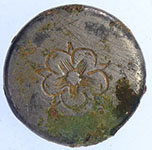 |
 |
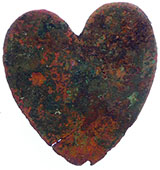 |
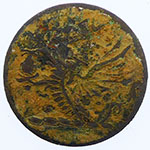 |
| 18thC Royal Navy button | 17thC belt slides | 1500-1700 mount | 19th C livery button |
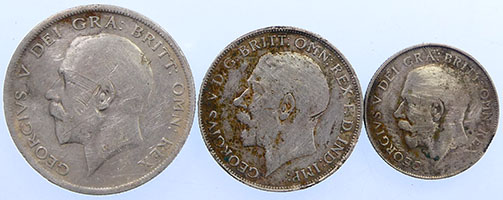 |
|||
| George V milled silver Half crown, Florin and shilling comparison | |||
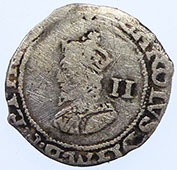 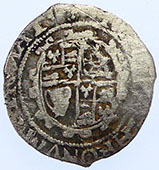 |
 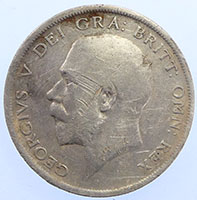 |
||
| 1625 Charles 1st hammered silver half groat | 1916 George V milled silver half crown (30 pence) | ||
 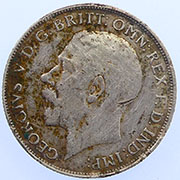 |
  |
||
| 1923 George V milled silver florin (25 pence) | 1925 George V milled silver sixpence (12 pence) | ||
10 to 40 AD Cunobelin Celtic silver unit Flower type - Classed as Extremely rare - Chris Rudd 54.78, VA 2049, ABC 2885
'Cooking' two ancient silvers to remove crust - one on right looks like a Roman BC Republican silver |
|||
Georgian gold shoe buckle |
|||
 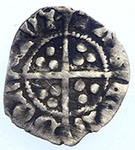 |
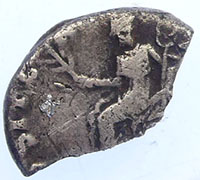 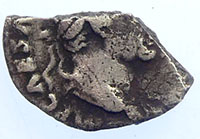 |
||
1413-22 Henry V hammered silver half penny - broken annulets by neck Rev CIVI/TAS/LONDON/DON - London mint |
Roman silver fragment sent for ID I'm pretty sure that fragment is from a denarius of Trajan (96-117 AD) the seated figure on the reverse holding palm-branch and caduceus is quite probably either Felicitas or Hilaritas. The wear seems reasonable for a piece in circulation for 20 years or so. |
||
 |
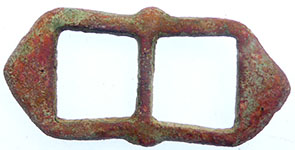 |
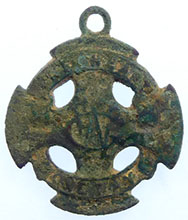 |
|
| 18th C clog fastener | 1500-1650 buckle | Military pendant | |
 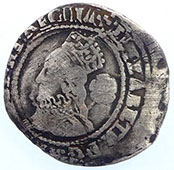 |
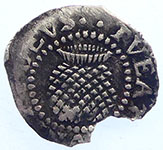 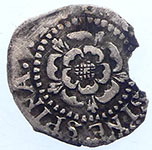 |
||
| 1578 Elizabeth 1st hammered silver half groat | 1602 James 1st hammered silver penny | ||
  |
|||
| 1582-4 Elizabeth 1st hammered silver half groat A mint mark | |||
Gold boys, Terry and Jay with their freebie club sweatshirts
Pictures from the field
5.47g,18.21mm
|
|||
| 50 BC Middle Whaddon Chase stater Celtic gold full stater Obv cross of 3 plain & 2 pellet lines with 2 opposed crescents b in centre Rev horse r ., above pellet in ring, pellet in wheel below Middle Whaddon Chase stater, VA 1491, BMC 343, ABC 2240. An extremely rare type, only 7 others known, very nice to see another one. This one seems to be from the same obverse die as 95.2630, same rev as CR 116, 2011, no. 32. Reverse similar to early staters of Addedomaros but an uninscribed type, much rarer. John Sills |
|||
Fake Roman silver coin ?? Someone playing a joke ? Oh yes, quite definitely a modern copy, and rather a crude one - notice how the dotted borders end for no good reason in the spacious area next to the rim - that's a common problem copiers often encounter when using less sophisticated copying methods. Another "tell" is the mechanically perfectly round flan (a major diagnostic ignored by the majority of fakers out there, it would seem. I guess the round vs "irregular" flan perception is not widespread among well-heeled noobs. That, and slabs, etc, all of which which are driving the ridiculous prices. I'm curious, though - did you & your folks dig this up? If not, what was the source?
2nd fake found on the same field ?? Good eye - definitely a modern copy, and perhaps from the same workshop as the Caesar elephant.
|
|||
850 BC Bronze Age socketed axe head |
|||
Unknown foreign hammered silver coin - researching it Short summary from what I read - looks like a half dirham of Ibn Abu Mahalli, usurper of the throne of the Saadi Empire in Marrakesh, Morocco. This coin was minted in 1612 or so (he seized Marrakesh in 1612). In 1613 he was defeated in battle and his head was hung from the city ramparts until it disintegrated 12 years later. Ohio Drew |
|||
Ct Terry just popped a gold posy ring C17thC - reported as potential treasure 'A true friends gift' No hallmark - marker mark ?EM 2.87g, 17.53mm
|
|||
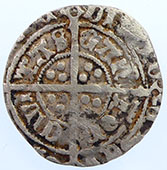 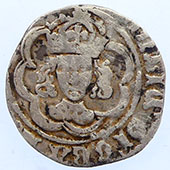 |
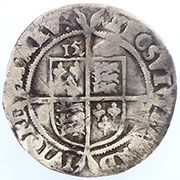 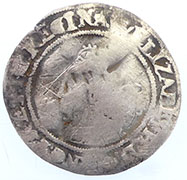 |
||
Henry VII 1486- 1504 hammered silver half groat Obv hENRIC DI'GRA *** Rev CIVI/TAS/CAN/TOR - Canterbury mint |
1567-70 Elizabeth 1st hammered silver sixpence - Coronet mint mark - 3rd and 4th issue | ||
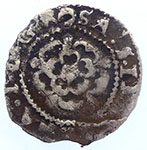 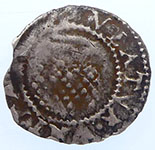 |
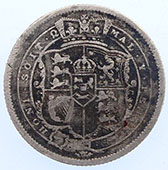  |
||
| 1603 James 1st hammered silver penny | 1820 George III milled silver shilling | ||
Beauty big Roman with detail - sent off to Mark Lehman for ID Hadrian (117-138 A.D.) Æ As, Mint of Rome, Struck AD 119-121 RIC 577b |
|||
 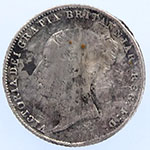 |
 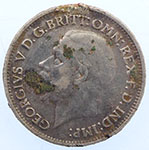 |
||
| 1866 Victoria milled silver sixpence | 1934 George V milled silver sixpence | ||
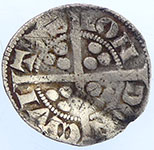 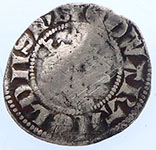 |
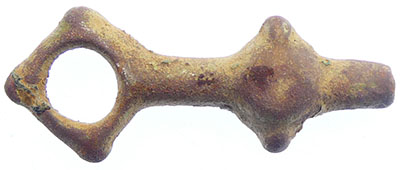 |
||
1279 Edward 1st hammered silver penny Obv EDWAR ANGL DNS hYB Rev CIVI/TAS/LON/DON - London mint |
Saxon harness cheek piece | ||
Roman enamelled bronze bead - traces of blue, red and gold remain |
|||
Roman votive figurine - traces of red and gold gilding remain |
|||
Medieval iron key |
|||
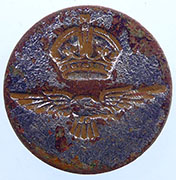 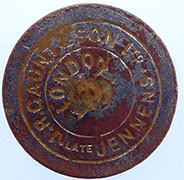 |
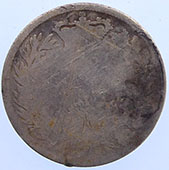 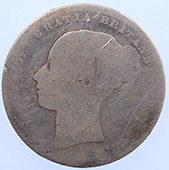 |
||
| Very unusual thick enamelled WWII Royal Air Force button | 19th C Victoria milled silver shilling | ||
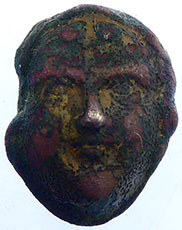 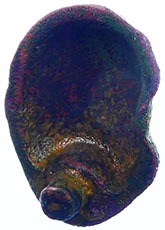 |
  |
||
| Georgian mount | 1939 George V milled silver half-crown (30 pence) | ||
  |
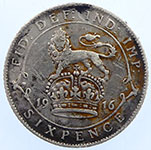 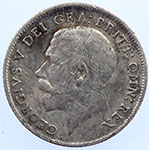 |
||
| 1216 Henry III hammered silver short cross half penny | 1916 George V milled silver sixpence | ||
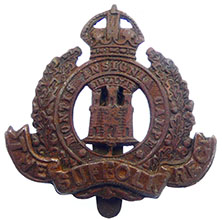 |
 |
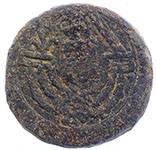 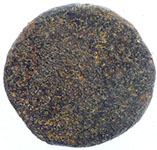 |
|
| WWII The Suffolk Regiment cap badge | A copper alloy medieval to post medieval rowel spur, dating to the c.14th- 17th century. The rowel is a five pointed star shape, with each point oval in cross section. In between each point is a triangular groove. In the centre of the rowel is a circular hole for attachment. | 14th/15thC 1/2 Gold Ryal - King with sword and shield standing in a ship type with rose coin weight | |
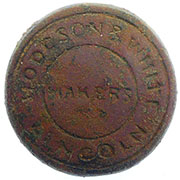 |
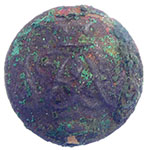 |
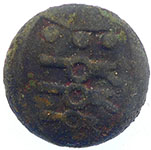 |
 |
| 'Wodeson and White' makers token | Army button ? | 18thC Royal Artillery button | Georgian button |
|
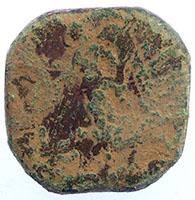 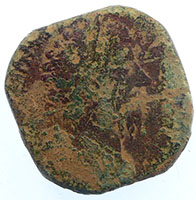 |
||
| 15th/16thC spur fragment | Very unusual monster thick Roman bronze - sent for ID Huge thick sucker !! 23.189g, 4.76mm Thick x 28.11 Wide. This one will be a bit harder to give you the sort of detail I did with the Hadrian as I believe this is a match - if not, it's close - I can't read any of the reverse legend. It's very similar, quite possibly the same, but he issued the same few types year after year changing only the dates, so my dating may be off. |
||
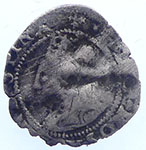 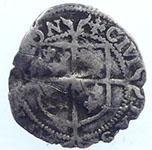 |
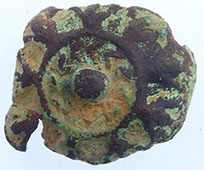 |
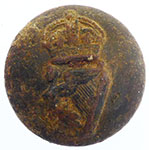 |
|
| 1560-1 Elizabeth 1st hammered silver penny - Cross Crosslet mint mark | Post medieval mount | WWII Irish guards regiment button | |
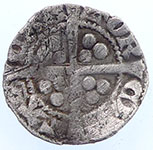 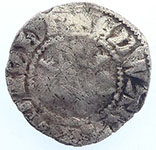 |
 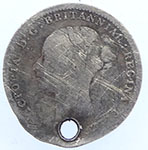 |
||
1279 Edward 1st hammered silver penny Obv EDWAR ANGL DNS hYB Rev CIVI/TAS/CAN/TOR - Canterbury mint |
1885 Victoria milled silver three pence | ||
 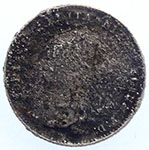 |
 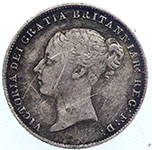 |
||
| 1838 Victoria milled silver four pence | 1864 Victoria milled silver sixpence | ||
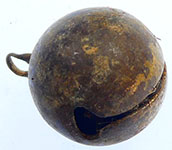 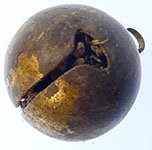 |
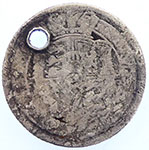  |
||
| Medieval gilded hawking bell | 1818 George III milled silver sixpence | ||
 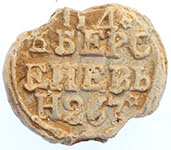 |
 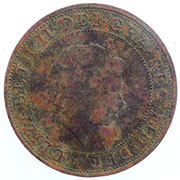 |
||
| 1828 Russian lead bale seal - Saint Petersburg | Not seen one of these before 1999 Elizabeth 2nd two pound coin Rugby World Cup
|
||
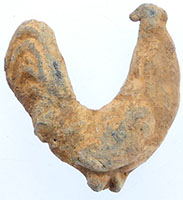 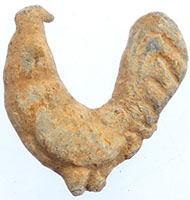 |
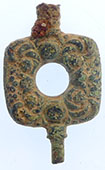 |
 |
|
| Post medieval lead toy chicken | Georgian watch winder | Georgian watch winder | |
Very unusual 11,000 BC flint scraper |
|||
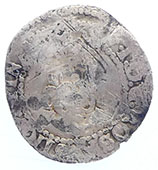 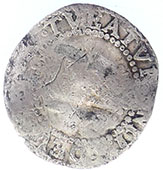 |
 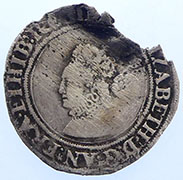 |
||
| 1603 James 1st hammered silver half groat | 1561 Elizabeth 1st hammered silver sixpence | ||
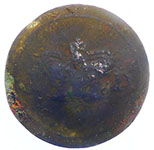 |
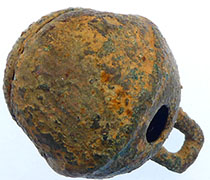 |
||
Victorian Police Department button Crown PD - Queens crown |
18THC crotal bell | ||
Moved finds to 2023 March Finds Page |
 |
